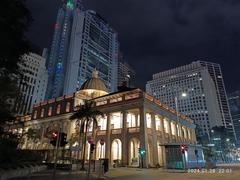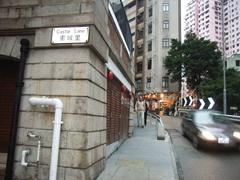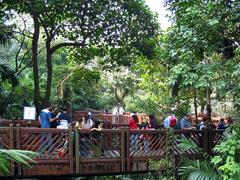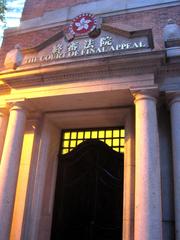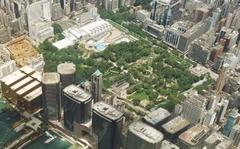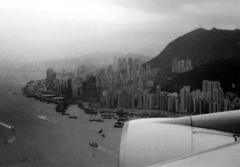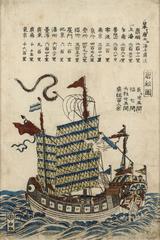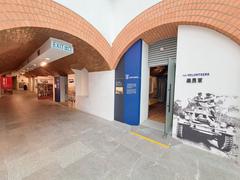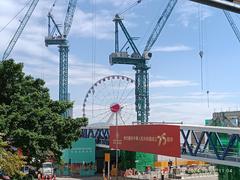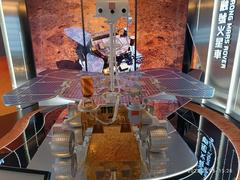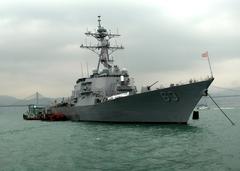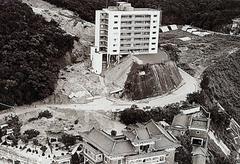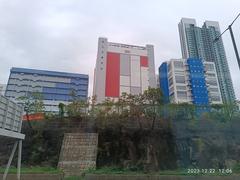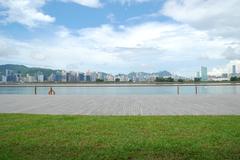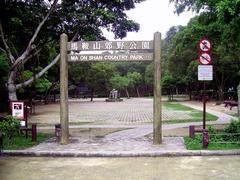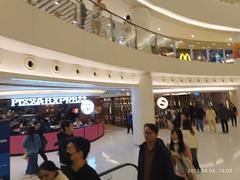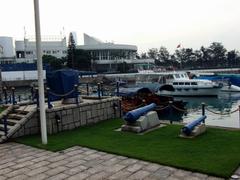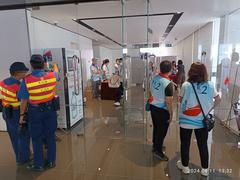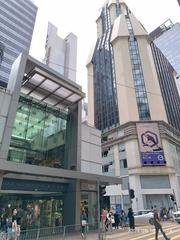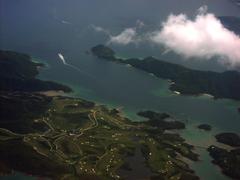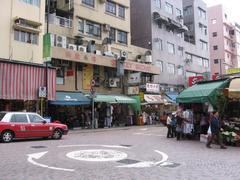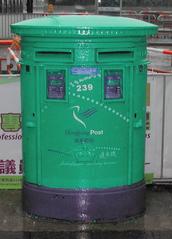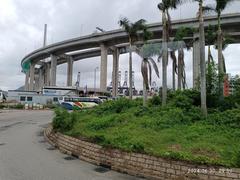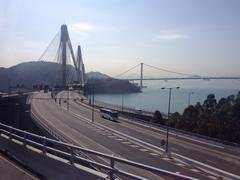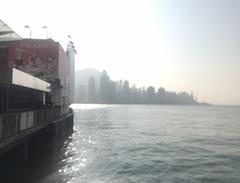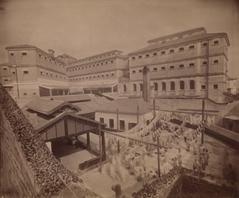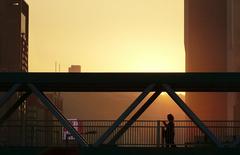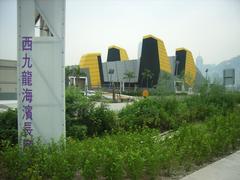Visiting Hours, Tickets, and Historical Insights on Tai Kwun, Hong Kong
Date: 17/07/2024
Introduction to Tai Kwun
Tai Kwun, officially known as the Central Police Station Compound, stands as one of Hong Kong’s most significant historical and cultural landmarks. Nestled in the heart of Central, Tai Kwun embodies a rich tapestry of Hong Kong’s colonial history and its evolution into a vibrant cultural hub. Established in 1864 during British colonial rule, the site originally served as the nucleus of law enforcement in the burgeoning city, encompassing the Central Police Station, the Central Magistracy, and the Victoria Prison (source). Over the decades, these buildings have witnessed pivotal moments in Hong Kong’s history, from colonial governance to post-war modernization and beyond.
The architectural significance of Tai Kwun is equally compelling, showcasing a unique blend of Victorian, Edwardian, and colonial styles. After its decommissioning in 2006, the Hong Kong government, in collaboration with the Hong Kong Jockey Club Charities Trust, embarked on an ambitious conservation and revitalization project. This initiative aimed to preserve the site’s historical integrity while repurposing it for contemporary use, ultimately transforming Tai Kwun into a dynamic space for heritage, arts, and leisure activities. Since its reopening in 2018, Tai Kwun has emerged as a beacon of cultural engagement, attracting visitors from around the globe (source).
Table of Contents
- Introduction
- Early Beginnings and Establishment
- Architectural Evolution
- Role During Colonial Era
- Post-War Period and Decline
- Conservation and Revitalization
- Reopening as a Cultural Hub
- Visiting Hours and Tickets
- Guided Tours and Events
- Nearby Attractions
- Historical Significance
- Notable Events and Figures
- Educational and Cultural Impact
- Preservation Challenges
- Future Prospects
- Frequently Asked Questions (FAQ)
- Visit and Stay Up to Date
Exploring Tai Kwun - Hong Kong’s Historical and Cultural Landmark - Visiting Hours, Tickets, and More
Early Beginnings and Establishment
Tai Kwun’s history dates back to the mid-19th century when Hong Kong was under British colonial rule. The Central Police Station was established in 1864, making it one of the earliest and most important law enforcement institutions in the colony. The site was strategically chosen due to its central location, which facilitated the administration of law and order in the burgeoning city.
Architectural Evolution
The architectural evolution of Tai Kwun reflects the changing needs and styles over the decades. The original buildings were constructed in a Victorian style, characterized by their robust and functional design. Over the years, additional structures were added, including the Central Magistracy in 1914 and the Victoria Prison, which was operational from 1841 until its closure in 2006. These buildings exhibit a mix of architectural styles, from classical to colonial, showcasing the historical layers of Hong Kong’s development.
Role During Colonial Era
During the colonial era, Tai Kwun served as the epicenter of law enforcement and judicial activities in Hong Kong. The Central Police Station was the headquarters for the Hong Kong Police Force, playing a crucial role in maintaining public order. The Victoria Prison, on the other hand, was the first and longest-running prison in Hong Kong, housing a variety of inmates, from petty criminals to political prisoners. The Central Magistracy was where many significant trials took place, making it a cornerstone of the colonial judicial system.
Post-War Period and Decline
After World War II, Hong Kong underwent rapid modernization and urbanization, which impacted Tai Kwun’s role and relevance. The compound continued to function as a police station, magistracy, and prison, but the facilities became increasingly outdated. By the late 20th century, the buildings were no longer suitable for modern law enforcement and judicial needs. In 2006, the Victoria Prison was officially closed, marking the end of an era for Tai Kwun.
Conservation and Revitalization
Recognizing the historical and cultural significance of Tai Kwun, the Hong Kong government initiated a conservation and revitalization project in the early 2000s. The project aimed to preserve the architectural heritage while repurposing the site for contemporary use. In 2008, the Hong Kong Jockey Club Charities Trust took on the responsibility of funding and managing the revitalization project, which was one of the largest heritage conservation projects in Hong Kong’s history.
Reopening as a Cultural Hub
After a decade of meticulous restoration and redevelopment, Tai Kwun reopened to the public in May 2018. The revitalized compound now serves as a vibrant cultural hub, offering a blend of heritage, arts, and leisure activities. The site includes art galleries, exhibition spaces, performance venues, and a variety of dining and retail options. The transformation of Tai Kwun from a colonial law enforcement complex to a modern cultural landmark is a testament to Hong Kong’s commitment to preserving its historical heritage while embracing contemporary cultural expressions.
Visiting Hours and Tickets
Tai Kwun is open daily from 10:00 AM to 11:00 PM. Admission to the site is free, but some exhibitions and events may require tickets, which can be purchased online through the official Tai Kwun website. It’s recommended to check the website for the latest updates on visiting hours and ticket availability.
Guided Tours and Events
Tai Kwun offers a variety of guided tours that provide insights into its historical significance and architectural features. These tours are available in multiple languages and can be booked in advance. Additionally, the site hosts a range of cultural events, including art exhibitions, live performances, and educational workshops, making it a dynamic destination for visitors of all ages.
Nearby Attractions
Tai Kwun is located in the heart of Central, Hong Kong, making it a convenient starting point for exploring nearby attractions. Visitors can easily access landmarks such as the Mid-Levels Escalator, Soho district, and the Man Mo Temple. The central location also offers numerous dining and shopping options, ensuring a well-rounded experience.
Historical Significance
Tai Kwun’s historical significance extends beyond its architectural and functional aspects. The compound is a symbol of Hong Kong’s colonial past and its journey towards modernization. It stands as a reminder of the city’s complex history, marked by periods of colonial rule, war, and rapid development. The preservation of Tai Kwun allows current and future generations to connect with this rich history and appreciate the cultural heritage that has shaped Hong Kong’s identity.
Notable Events and Figures
Throughout its history, Tai Kwun has been associated with numerous notable events and figures. For instance, the compound was the site of the trial of Ho Chi Minh, the future leader of Vietnam, who was arrested in Hong Kong in 1931. The Central Magistracy also witnessed many high-profile cases, reflecting the social and political dynamics of the time. The stories of the inmates, police officers, and judicial officials who passed through Tai Kwun add a human dimension to its historical narrative.
Educational and Cultural Impact
Today, Tai Kwun plays a crucial role in educating the public about Hong Kong’s history and culture. The site offers a range of educational programs, guided tours, and exhibitions that delve into its historical significance. These initiatives aim to foster a deeper understanding and appreciation of Hong Kong’s heritage among locals and visitors alike. The cultural events and activities hosted at Tai Kwun also contribute to the city’s vibrant arts scene, making it a key destination for cultural engagement.
Preservation Challenges
The preservation of Tai Kwun was not without challenges. The project required balancing the need to maintain the historical integrity of the buildings with the demands of modern usage. This involved extensive research, careful planning, and the use of advanced conservation techniques. The successful revitalization of Tai Kwun serves as a model for heritage conservation projects, demonstrating the importance of preserving historical sites while adapting them for contemporary purposes.
Future Prospects
Looking ahead, Tai Kwun is poised to continue its role as a cultural and historical landmark in Hong Kong. The ongoing efforts to maintain and enhance the site ensure that it remains a dynamic space for cultural exchange and historical reflection. As Tai Kwun evolves, it will undoubtedly continue to contribute to Hong Kong’s cultural landscape, offering a unique blend of history, art, and community engagement.
Frequently Asked Questions (FAQ)
What are the opening hours of Tai Kwun?
Tai Kwun is open daily from 10:00 AM to 11:00 PM.
How much does it cost to visit Tai Kwun?
Admission to the site is free, but some exhibitions and events may require tickets.
Where can I buy tickets for Tai Kwun events?
Tickets can be purchased online through the official Tai Kwun website.
Are there guided tours available at Tai Kwun?
Yes, Tai Kwun offers a variety of guided tours in multiple languages. These can be booked in advance.
What are some nearby attractions to Tai Kwun?
Nearby attractions include the Mid-Levels Escalator, Soho district, and the Man Mo Temple.
Visit and Stay Up to Date
For more detailed information on Tai Kwun’s history and its current offerings, you can visit the official Tai Kwun website. Don’t forget to download the mobile app Audiala, check out our other related posts, and follow us on social media for more updates.
Summary and Key Points
Tai Kwun’s journey from a colonial law enforcement complex to a modern cultural landmark is a testament to Hong Kong’s commitment to preserving its historical heritage while embracing contemporary cultural expressions. The site’s meticulous restoration and adaptive reuse have made it a focal point for heritage, arts, and community engagement. Visitors can explore a variety of experiences, from historical exhibitions and guided tours to contemporary art displays and live performances, all set against the backdrop of Tai Kwun’s unique architectural ensemble (source).
Beyond its cultural offerings, Tai Kwun plays a crucial role in the social and economic fabric of Hong Kong, providing educational programs, creating job opportunities, and supporting local businesses. Its successful revitalization serves as a model for heritage conservation projects worldwide, demonstrating the importance of balancing historical preservation with modern functionality. As Tai Kwun continues to evolve, it remains a vital space for cultural exchange and historical reflection, ensuring that Hong Kong’s rich heritage is celebrated and preserved for future generations (source).
References
- Tai Kwun, 2024, source

